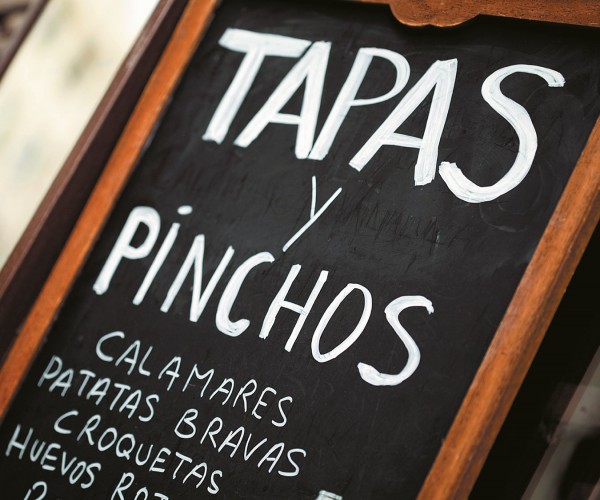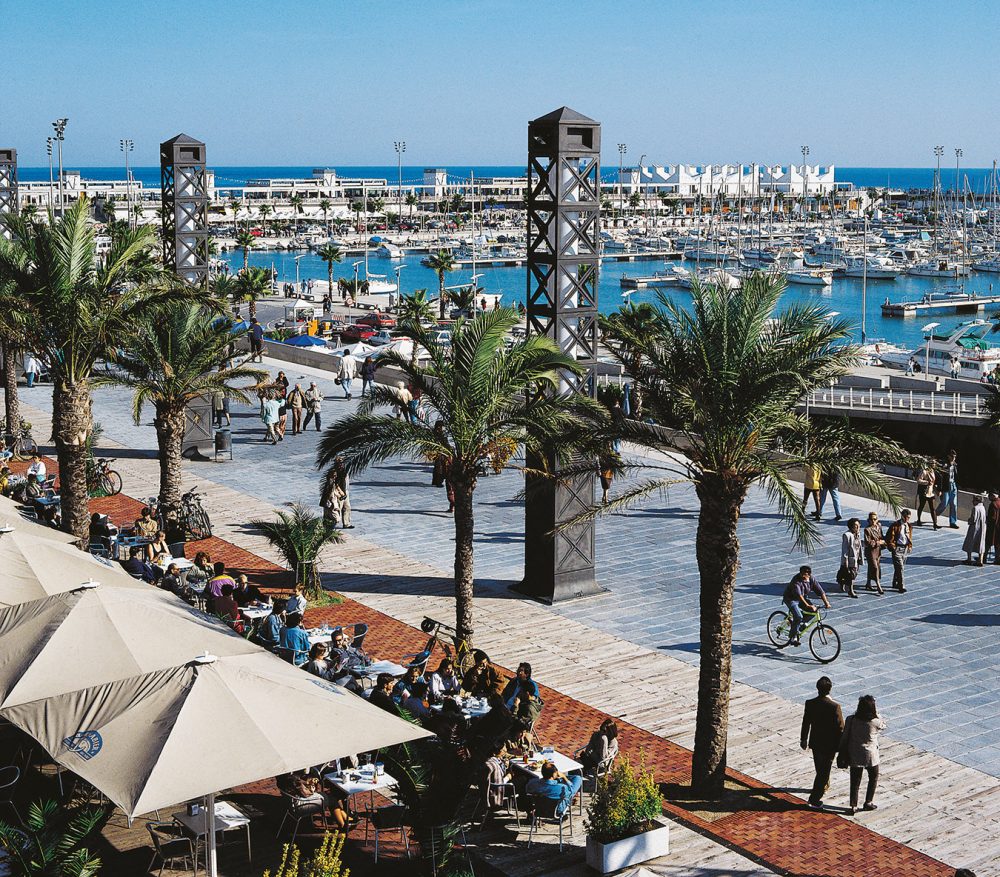Ernest Hemingway once called Spain “the last good country left.” Judging by what they eat and drink, I couldn’t agree more.
You can tell a lot about a country by what, and how, its people eat. In Spain, they eat late. And I mean really late. I was able to secure a last-minute dinner reservation at a well-known Barcelona restaurant not because I was open to sitting at the bar, but because I didn’t mind coming in at the ungodly early hour of eight-thirty. A typical Spanish city dinner (which is almost always eaten out) begins at 10:00 p.m. and winds up around midnight. If you’re wondering how the Spanish work the next day, it’s because they don’t, at least not between the hours of 2:00 and 5:00 p.m., when everyone enjoys a full lunch and siesta.
Lunch is taken very seriously in Spain. Perhaps this is because the entire country subscribes to the idea that after lunch, you nap. It’s easy to understand why. For one, there is always wine with lunch. At a café in Madrid, I enjoyed a menu del dia (a menu of the day) that included three-courses and a half bottle of white wine for just $20. I slept it off in a park behind the Museo Nacional del Prado.

Photo: ©Manuel Velasco/iStock.
Of course, no visit to Spain is complete without tapas. Temptation is everywhere, in the form of tuna stuffed peppers, baked octopus with potatoes and paprika and the myriad versions of Spanish tortilla—an egg and potato quiche that, when done right, is a fluffy slice of heaven. My first day in Barcelona begins with a trip to La Boqueria Market off La Rambla. At the suggestion of a few foodie friends of mine, I pull up a stool at Bar Pinotxo. There’s no menu here, just whatever happens to be on offer. When I visit, it’s chipirónescon mongetes, a combo of light beans and baby squid bathed in olive oil and balsamic, clams steamed under a glass loaf pan then dressed with olive oil, garlic and parsley, and esqueixada de bacallà, a salted cod salad with torn pieces of rehydrated salted cod, tomatoes, onions and bell peppers, then sprinkled with olive oil. This type of food rarely uses more than three or four ingredients, which I learn is the key to any proper tapas offering.
Of course, there is more to Barcelona dining than the rows of tapas bars that lure hungry travellers off la Rambla. I decided to try a high-end version of small plate fare at Comerç 24, a slick restaurant housed in an old preserves shop in the Gothic Quarter. Chef Carles Abellan made a name for himself at the three-Michelin-star restaurant El Bulli; now at Comerç 24, he’s playing on the tapas tradition by marrying it with his expertise in molecular gastronomy. I order the Festival Menu and am immediately brought a selection of olive oils with fresh baked bread. Then come golden macadamia nuts (literally dusted with gold powder); monkfish with black sesame and black garlic; a consommé with egg and truffle moulded into marble-sized bites that pop in my mouth; and a duck rice with foie gras and corn nut topping that, to this point, is the highlight of my trip. Dessert is done tapas style too, with a vanilla whipped cream and black sesame crust Oreo that borders on sublime, followed by a bread, oil, chocolate and salt sandwich that leaves me breathless. By the end of the night I’m so excited, I ask the chef to sign my menu. He does, and includes a note that asks me to come back soon. Believe me, I will.









